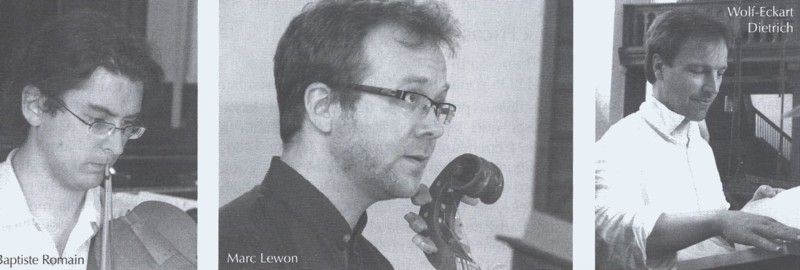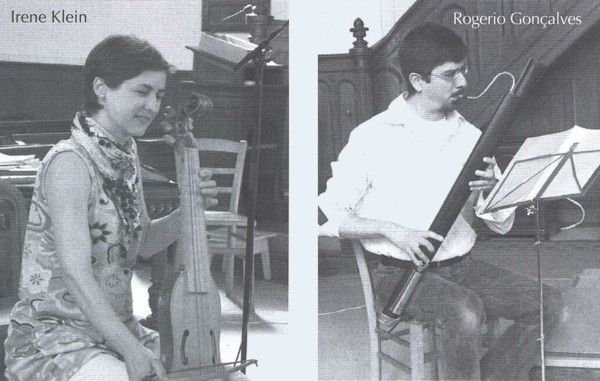Le Maître de »Fricassée« / Les Flamboyants
Secular Music of Jean JAPART (fl. 1474-81)
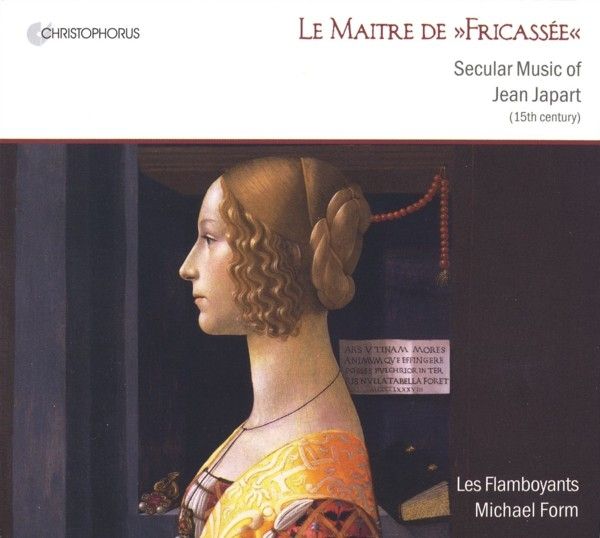
medieval.org
Christophorus CHR 77353
2011
1. L'homme armé · Monodie [0:31]
2. JOSQUIN (c.1450-1521). L'omme armé · a4 [2:00]
3. Jean JAPART. Il est de bonne heure ne / Lomme armé
· a4 [1:19]
4. Jacob OBRECHT (c.1450-1505). Tant que nostre argent durra · a4
[1:28]
5. Jean JAPART (?) - Amours fait mult / Il est de bonne heure /
Tant que nostre argent · a4 [1:13]
6. Jean JAPART. Tan bien mi son pensa · a4 [2:00]
7. Jean JAPART. Pour passer temps / Plus ne chasceray
· a4 [1:42]
8. Jean JAPART. Questa se chiama · a4 [1:10]
9. Jean JAPART (?) - Jay biens nori · a3 [3:06]
10. Helas quel e a mon gre · Monodie [1:07]
11. Jean JAPART. Helas quel e a mon gre · a4 [1:27]
12. Jean JAPART. Fortuna d'un gran tempo ·
rekonstruierte Monodie [0:21]
13. JOSQUIN. Fortuna dun gran tempo · a3 [1:43]
14. Jean JAPART. Fortuna dun gran tempo · a4 [1:38]
15. Johannes MARTINI (c.1440-1497/98). Fortuna d'un gran tempo · a4
[1:49]
16. Antoine de VIGNE. Franc cœur qu'as tu / Fortuna dun gran
tempo · a5 [1:01]
17. Hayne van GHIZEGHEM (c.1445-c.1495). De tous biens playne · a3
& a4 [5:52]
18. Jean JAPART. De tous biens playne · a4 [1:41]
19. Jean JAPART (?) - Je cuide se ce tamps dure · a3
[1:43]
20. Jean JAPART. Je cuide / De tous biens · a4 [1:17]
21. Jean JAPART. Tmeskin was jonk · a3 & a4 [2:24]
22. J'ai pris amours · a3 [2:52]
23. Jean JAPART. J'ai pris amours · a4 [1:00]
24. Jean JAPART. J'ay pris amours · a4 [1:09]
Canon «Fit aries piscis in licanosyparthon»
25. Antoine BUSNOYS (c. 1430-1492). Jay pris amours · a4 [2:24]
26. Jean JAPART. Amours amours amours · a4 [2:08]
27. Jean JAPART. Nenciozza mia · a4 [2:01]
28. Jean JAPART. Prestes le moy · a4 [2:58]
29. Jean JAPART. Vray dieu d'amours / Sancte Joannes baptista /
Ora pro nobis · a5 [1:15]
30. Jean JAPART. Trois filles estoient · a3 [2:01]
31. Si congié prens (1. Strophe) [0:59]
32. Jean JAPART. Se congie pris · a4 (verse 2, anonym)
[2:30]
33. Se congie pris (3. Strophe) [2:20]
34. JOSQUIN. Se congié prens · a6 (4. Strophe)
[2:05]
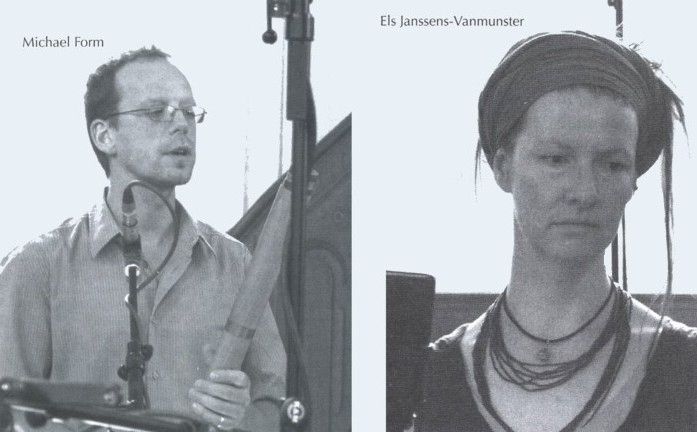
Els Janssens-Vanmunster, chant
Michael Feyfar, chant
Les Flamboyants
www.lesflamboyants.eu
Wolf-Eckart Dietrich, clavicytherium
Rogerio Gonçalves, dulcian & percussion
Irene Klein, viola da gamba & viola d'arco
Marc Lewon, lute, gittem, Renaissance guitar, viola d'arco &
chant
Romina Lischka, viola da gamba
Giovanna Pessi, harp
Baptiste Romain, vielle & Renaissance violin
Silvia Tecardi, vielle & viola d'arco
Michael Form, flute & direction

Quellen:
Ottaviano Petrucci: Harmonice Musices Odhecaton
A (Venedig 1501): #5 6 11 13 17 19 21 23 25 26 27 32
Canti B. No Cinquanta (Venedig 1502): #2 16 20 24
Canti C. No cento Cinquanta (Venedig, 1503/04): #3 4 7 8 14 18 28 29 33
#9: Rom, Biblioteca Apostolica Vaticana, C.G. XIII.27 «Cappella
Giulia Chansonnier»
#10: Paris, Bibl. Nationale, fonds fr. 12744
#15: Florenz, Bibl. Nazionale Centrale, Ms. Banco Rari 229
#17: Kopenhagen, Kongelige Bibl., Thott 291, 80, "si placet": Odhecaton
#22: Paris, Bibl. Nationale, Rés. VmC., Ms 57 «Codex
Cordiforme»
#30: Paris, Bibl. Nationale, fonds fr.15123
#34: Le Septiesme livre..., Tylman Susato, Antwerpen 1545
Executive producer DRS 2: Annelise Alder
Executive producer MusiContact: Joachim Berenbold
Recording: 23.-29. June 2010, Temple St. Jean, Mulhouse (France)
Recording producer & digital editing: Michaela Wiesbeck
Editor & layout: Joachim Berenbold
Translation: Lindsay Chalmers-Gerbracht (English)
English liner notes
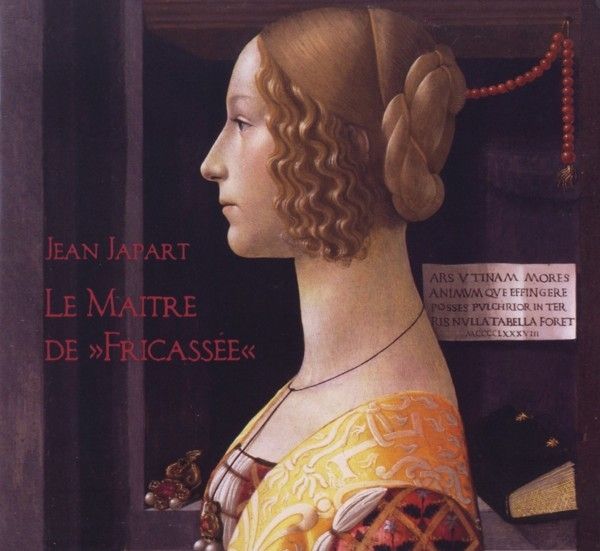
Jean
Japart
Hommage an den Meister des „Fricassée"
von Michael Form
Jean Japart gehört zu den großen Unbekannten der
franko-flämischen Schule des späten 15. Jahrhunderts. Dabei
zeichnet sich seine Musik durch überraschende Wendungen, gewagte
Harmonik und kühne Satzstrukturen aus, die den Hörer des 21.
Jahrhunderts in Erstaunen versetzen. Freilich erfüllt Japart nicht
die Voraussetzungen, um in den klassischen Kanon der
<unsterblichen> Alten Meister aufgenommen zu werden. Er hat weder
Messen noch groß angelegte Motetten wie Josquin, Obrecht,
Ockeghem oder Isaac geschaffen, sondern sich ausschließlich den
kleinen weltlichen Formen der Chanson und der Instrumentalmusik
gewidmet. Außerdem ist sein erhaltenes Œuvre kaum
umfangreich genug, um mit ihm ein Konzertprogramm zu füllen.
Über Japarts Lebenslauf ist zudem nur sehr wenig bekannt.
Vermutlich wurde er um 1450 in der Picardie, im heutigen
Nordfrankreich, geboren. Unter den nach dem Mord an Galeazzo Maria
Sforza 1476 entlassenen Musikern der Mailänder Hofkapelle befindet
sich ein gewisser <Johanne haeppart>, bei dem es sich vermutlich
um Japart handelt. Schlaglichtartig tritt er uns als hoch angesehener
(und ebenso hoch bezahlter) Sanger am Hof von Ercole I. d'Este in
Ferrara entgegen, einem Brennpunkt musikalischer Hochkultur im letzten
Drittel des 15. Jahrhunderts. In Ferrara wird er am 1. April 1477 zum
ersten Mal erwähnt. Dass er besondere fürstliche Gunst
genoss, geht aus Dokumenten aus den Jahren 1479 und 1480 hervor, welche
die finanzielle Unterstützung durch Ercole beim Erwerb eines
Hauses belegen. Dies lässt vermuten, dass Japart vorhatte, in
Ferrara sesshaft zu werden. Jedoch wird er ab dem 1. Februar 1481 nicht
mehr unter den Ferrareser Hofmusikern geführt. Danach verlieren
sich seine Spuren. Ihn mit Gaspar van Weerbeke, dem von Galeazzo mit
der Rekrutierung der Mailänder Hofkapelle beauftragten
flämischen Musiker zu identifizieren, ist wohl genau so
spekulativ, wie ihm in <Jaspare>, einem sangmeester an
der Liebfrauenkirche in Bergenop-Zoom 1504-08 wiederbegegnen zu wollen.
Nicht zuletzt ist eine Zeitspanne von 23 Jahren zu lang, in welcher der
Werdegang eines scheinbar hoch geschätzten Musikers im Dunkeln
liegen würde. Das Fehlen biographischer Informationen lässt
vielmehr vermuten, dass Japan unerwartet in Ferrara gestorben ist.
Josquin Desprez' Chanson, «Revenue d'outre monts, Japart/Je
n'ai du sort que mince part», ist eine Deploration auf dessen
Tod. Leider ist das Werk verloren gegangen, so dass mit Hilfe
stilistischer Untersuchungen keine zeitliche Einordnung möglich
ist, um über diesen Umweg auf Japarts Todesjahr zu
schließen. Bemerkenswert bleibt indes, dass Josquin nur einem
einzigen anderen Komponisten einen musikalischen Nachruf gewidmet hat,
nämlich dem großen Johannes Ockeghem. Wo sich die beiden
Musiker begegnet sein könnten, ist unklar, zumal wenn man den Tod
Japarts auf die Zeit kurz nach 1481 ansetzt, denn Josquin reiste nicht
vor 1480 nach Oberitalien und hatte seine Festanstellung am Ferrareser
Hof erst ab 1503. Insofern muss die Frage, ob sich die beiden Musiker
überhaupt persönlich gekannt haben, offen bleiben.
Gegen ein frühes Todesjahr spricht der prominente Status, den
Ottaviano Petrucci Jean Japart in seinem monumentalen dreiteiligen
Notendruck, den Harmonice Musices Odhecaton A (1501), den Canti
B numero cinquanta (1502) und den Canto C numero cento cinquanta
(1503/04) eingeräumt hat: Japarts Œuvre umfasst 23 textlose
Chansons (darunter sechs mit widersprüchlicher Zuschreibung),
davon wurden 21 von Petrucci gedruckt. Falls Japan tatsächlich
1481 oder kurz danach gestorben ist, dann wäre er einer der
wenigen Komponisten, die zum Zeitpunkt der Drucklegung schon viele
Jahre tot waren. Ansonsten wurden nur Antoine Busnoys, Johannes
Martini, Johannes Ockeghem, Johannes Regis und Hayne van Ghizeghem
diese posthume Ehre zuteil. Jedoch ist keiner dieser Komponisten, die
das 16. Jahrhundert nicht erlebt haben, mit so vielen Werken vertreten
wie Japart. Selbst Alexander Agricola und Josquin Desprez, die
bedeutendsten Meister ihrer Zeit, stehen quantitativ nach. Der aktuelle
Stand der Forschung kann für diese vermeintliche Diskrepanz (noch)
keine Lösung anbieten.
Zwei stilistische Merkmale sind für Jean Japarts Kompositionsstil
besonders charakteristisch: das Quodlibet und der Rätselkanon.
Japarts außergewöhnliche kontrapunktische Begabung findet
ihren Niederschlag in kunstvollen Quodlibets (franz. fricassées),
in denen er mehrere bereits existierende, meist bekannte Lied-Melodien,
miteinander kombiniert. Zu einem klingenden gordischen Knoten steigern
sich Stücke wie Amours fait mult/Il est de bonne heure/Tant
que nostre argent, in denen er nicht weniger als drei verschiedene
Melodien übereinander schichtet, die bereits von Zeitgenossen zu
polyphonen Sätzen verarbeitet wurden. Diese Technik des Zitierens
ermöglicht es, eine Vielzahl von Bezügen zu schaffen, die wir
in der vorliegenden Einspielung in Form von ,Suiten', die auch Werke
anderer Komponisten einbeziehen, musikalisch hörbar machen. Vray
dieu d'amours/Sancte Joannes baptista/Ora pro nobis, ebenfalls ein
Quodlibet besonderen Charakters, könnte Japarts Beitrag zu einem
kompositorischen Wettstreit gewesen sein; zumindest sind ganz
ähnliche Stücke von Heinrich Isaac und einem anonymen
Komponisten überliefert: In den jeweils fünfstimmigen
Sätzen wird die Litanei der Heiligen mit einer weltlichen
Chanson-Melodie konfrontiert.
Unter Rätselkanons versteht man Stücke, bei denen zumindest
eine Stimme anders aufgeführt wird als sie notiert ist, wobei dies
mitunter einer verbalen Anleitung bedarf. In ihrem musikalischen
Diskurs zu J'ai pris amours liefern sich Japart und Antoine
Busnoys ein besonderes Spiel: Während Busnoys den Tenor dieser
anonymen Chanson in freier Umkehrung der Intervalle („au
rebours") durchführt, bringt Japart die Cantus-Stimme im Krebsgang
— allerdings in die Bassstimme verlegt und um das Intervall einer
Duodezime nach unten transponiert. Bemerkenswert ist der notengetreue
Rückwärtslauf sowohl der Melodie als auch des Rhythmus'. Um
sicher zu stellen, dass trotz dieser Verfremdung die ursprüngliche
Chanson erkennbar bleibt, verstreut Japart Bruchstücke der
originalen Cantus-Stimme in den drei Oberstimmen. In De tous biens
playne hingegen kehrt Japart die Tenormelodie um. Durch die
kompromisslose Respektierung der originalen Intervallverhältnisse
ergeben sich exotische, mitunter sperrige kontrapunktische Wendungen.
Darüber hinaus hatte Japart eine Vorliebe für Sätze, in
denen zwei Stimmen streng kanonisch geführt werden. In Pour
passer temps/Plus ne chasceray sans gans provoziert dies eine
Fülle von relationes non harmonicae, die aus der strengen
Kanonführung der Mittelstimmen (Tenor und Contratenor)
resultieren. Immer wieder ergeben sich Klauseln an untypischen Stellen,
die entweder zu für Japarts Epoche altmodischen
Doppelleittonkadenzen führen oder zu unvermeidbaren, scharfen
Querständen. Gemeinsam mit Vorhaltsbildungen, die erst im 17.
Jahrhundert üblich werden, entsteht eine fast manieristische
Musik, die sich spielerisch disparater Floskeln bedient.
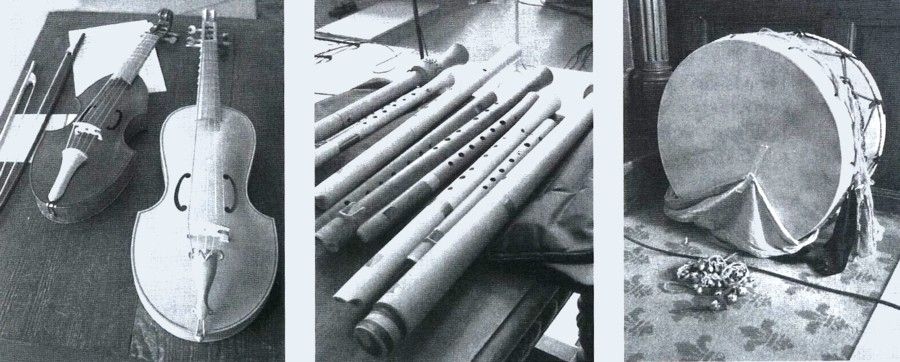
Jean
Japart
An Homage to the Master of the "Quodlibet"
by Michael Form
Jean Japart remains one of the "great unknowns" of the Franco-Flemish
school of the late fifteenth century. His music is characterised by
several unusual features such as daring harmony and bold contrapunctual
structures, which even strike a modern audience. However Japart does
not fulfil the classical requirements to be included in the canon of
the 'immortal' Old Masters: He composed no masses or large-scale motets
like his contemporaries Josquin, Obrecht, Ockeghem and Isaac, but
devoted himself exclusively to smaller secular forms such as the
chanson and instrumental music. Moreover his entire compositional
oeuvre could scarcely fill a concert programme.
There is also very little known about Japart's biographical details. He
was probably born around 1450 in Picardie, now a region of northern
France. Among the musicians of the Court Chapel in Milan dismissed in
1476 after the murder of Galeazzo Maria Sforza, there is mention of a
certain 'Johanne haeppart' which presumably refers to Japart.
Historically speaking, the first documented reference to Japart dates
back to 1 April 1477 where we encounter him as an already highly
acclaimed (and equally highly paid) singer at the court of Ercole I
d'Este in Ferrara, a major centre of intense musical culture in the
last third of the fifteenth century. Additional documents from 1479 and
1480 reveal that he enjoyed special ducal favours bestowed by Ercole
concerning financial support for the acquisition of a house which would
suggest that Japart was intending to settle permanently in Ferrara. His
name is however no longer included in the list of court musicians at
Ferrara after 1 February 1481, and at this point we lose all subsequent
traces of the composer. Speculation identifying him as Gaspar van
Weerbeke, the Flemish musician commissioned by Galeazzo to recruit
members of the court chapel in Milan, is just as tenuous as the
possibility that he could have resurfaced as 'Jaspare', a sangmeester
at the Liebfrauenkirche [Church of Our Lady] in Bergen-op-Zoom between
1504 and 08. Nevertheless, a period of 23 years with no further mention
of the ongoing career of this apparently greatly respected musician is
too long to be plausible; the lack of any additional biographical
documentation would suggest that Japart died unexpectedly in Ferrara.
Josquin Desprez' chanson, «Revenue d'outre monts, Japart/Je n'ai
du sort que mince part», is a lamentation on the composer's
death: Unfortunately this work has now been lost, preventing a
stylistic examination which could perhaps have indirectly narrowed down
the period of time during which Japart's death could have occurred. It
is, however, remarkable that Josquin only wrote one other musical
obituary, namely on the death of the great Johannes Ockeghem. Where
Josquin and Japart could have met also remains unclear, particularly if
the death of Japart is estimated to have occurred shortly after the
year 1481, as Josquin did not travel to northern Italy before 1480 and
only took up a post at the court in Ferrara in 1503. The question as to
whether both composers were actually personally acquainted with one
another must therefore remain unanswered.
Counter-evidence for the early death of Japart is provided by the
prominent status given to the composer by Ottaviano Petrucci in his
monumental musical publication in three volumes, the Harmonice
Musices Odhecaton A (1501), the Canti B numero cinquanta
(1502) and the Canti C numero cento cinquanta (1503/04).
Japart's complete oeuvre encompasses 23 chansons without text
(including six with contradictory attribution), of which Petrucci
printed 21 of these works in his anthology. Should Japart actually have
died in or around 1481, this would make him one of the few composers to
have been long dead at the time of printing of these volumes: only
Antoine Busnoys, Johannes Martini, Johannes Ockeghem, Johannes Regis
and Hayne van Ghizeghem shared this posthumous honour. However, none of
the composers who had died before 1500 rival Japart output in these
volumes; even Alexander Agricola and Josquin Desprez, the most eminent
masters of their time, are quantitatively less well represented. The
status of current research cannot (yet) offer a solution for this
putative discrepancy.
Jean Japart's compositional style is characterised by two distinct
features: the quodlibet and the enigma canon. His extraordinary gift
for counterpoint is manifested in elaborate quodlibets (Fr.: fricassées)
in which he intertwines several pre-existing and already well-known
melodies. Pieces such as Amours fait mult/Il est de bonne
heure/Tant que nostre argent form an intricate musical Gordian knot
with no fewer than three different melodies layered above one another
which had already been set to polyphonic versions by Japart's
contemporaries. This particular technique of quotation creates a dense
web of intertextual relationships which are emphasized in the present
recording through the compilation of several pieces into 'suites',
incorporating music by other composers. Vray dieu d'amours/Sancte
Joannes baptista/Ora pro nobis, another quodlibet of unique
character, could have served as Japart's contribution to a
compositional contest; very similar works by Heinrich Isaac and an
anonymous composer have also survived. The five-part settings juxtapose
the Holy Litany with a secular chanson melody.
Enigma canons are pieces in which at least one part is performed
differently than notated and therefore calls for explanatory notes.
Japart and Antoine Busnoys engage in subtle games in their musical
discourses on J'ai pris amours: Busnoys sets the tenor part of
this famous, although anonymous chanson in a free inversion of
intervals ("au rebours"), but Japart not only sets the cantus as a
retrograde canon and moreover places it on the bass line transposed
down by an octave and a fifth. The note-for-note reversal of both
melody and rhythm are indeed remarkable. To ensure that the original
chanson remains recognisable despite its obscuration, Japart scatters
fragments of the original cantus among the three upper voices. In
contrast, the tenor melody in De tous biens playne is inverted:
The uncompromising inversion of the original intervals produces exotic
and at times rough contrapuntal turns.
Japart also had a predilection for musical structures in which two
voices were constructed in strict canon. In Pour passer temps/Plus
ne chasceray sans gans for example, this produces an abundance of relationes
non harmonicae resulting from the strict canonical imitation of the
two middle voices (tenor and contratenor). This creates a number of
clausulas occurring at untypical places either resulting in double
leading tone cadences, a somewhat old-fashioned feature in Japart's
era, or in unavoidable harsh harmonical relations. All this combined
with suspensions which were not customary until the seventeenth century
results in an almost manneristic musical character.
